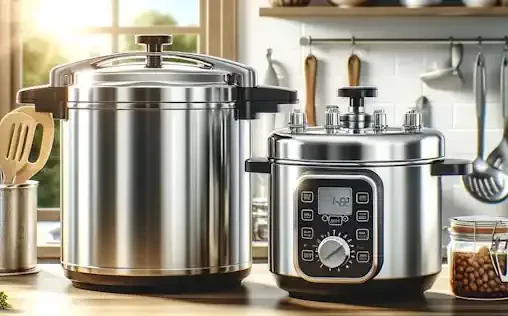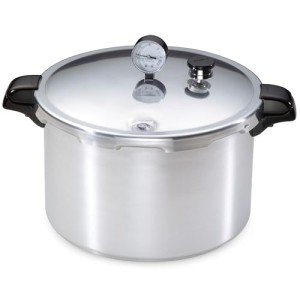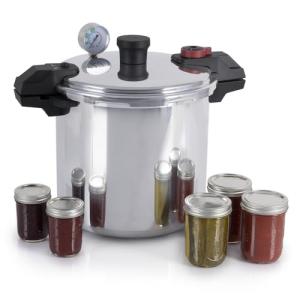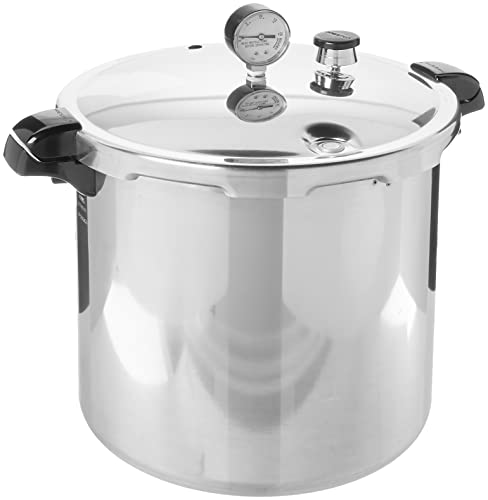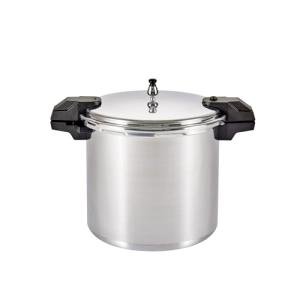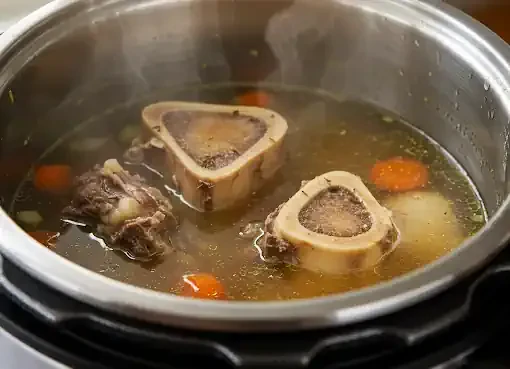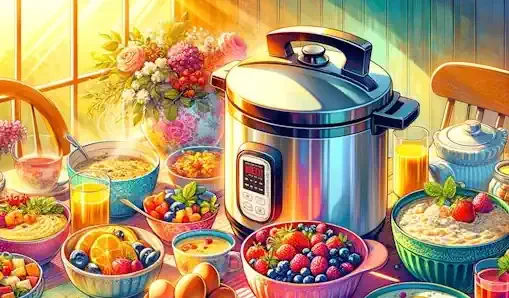Introduction
Pressure Cookers and Canners: Unlocking Efficiency in the Kitchen
Pressure cookers and canners stand as stalwart companions in the modern kitchen, bridging the gap between convenience and culinary mastery. In this introductory section, we embark on a journey to unravel the essence of these indispensable kitchen appliances, exploring their definitions, purposes, and the historical tapestry that weaves their narrative.
Definition and Purpose
At their core, pressure cookers and canners are culinary instruments engineered to harness the power of pressure and steam, transforming the cooking experience. A pressure cooker is a sealed vessel that traps steam within, elevating the pressure and temperature to expedite the cooking process dramatically. Conversely, canners are specialized vessels designed to seal and process foods in airtight containers, safeguarding them against spoilage and decay through precise application of heat and pressure.
The primary purpose of pressure cookers lies in their ability to revolutionize cooking times and outcomes. By subjecting ingredients to intense pressure, pressure cookers accelerate the breakdown of tough fibers in meats and infuse flavors deeply into dishes in a fraction of the time traditional cooking methods would require. Canners, on the other hand, extend the lifespan of perishable foods by preserving them in sealed containers, ensuring their availability long after their harvest.
Historical Background
The lineage of pressure cookers and canners can be traced through the annals of culinary history, marked by innovation and adaptation. The genesis of pressure cooking can be attributed to the ingenuity of Denis Papin, a French physicist who conceptualized the "steam digester" in the 17th century, a rudimentary precursor to the modern pressure cooker. However, it wasn't until the 20th century that pressure cookers found their way into domestic kitchens, courtesy of industrial advancements that made them safer and more accessible.
Concurrently, the evolution of canning techniques mirrors a parallel trajectory, with ancient civilizations employing rudimentary preservation methods to safeguard their harvests. The seminal work of French chef Nicolas Appert in the 19th century paved the way for modern canning practices, as he pioneered the process of sealing foods in glass jars and subjecting them to heat to inhibit bacterial growth.
Today, pressure cookers and canners occupy revered positions in kitchens worldwide, embodying a harmonious blend of tradition and innovation. Their journey through time epitomizes humanity's relentless pursuit of culinary excellence and efficiency, culminating in the indispensable tools we cherish today.
Types of Pressure Cookers and Canners
Embarking on our exploration of pressure cookers and canners, we navigate the diverse landscape of these indispensable kitchen appliances. In this section, we unveil the various types of pressure cookers and canners available to modern consumers, each offering unique features and functionalities tailored to diverse culinary needs.
Stovetop Pressure Cookers
Stovetop pressure cookers represent the quintessential embodiment of pressure cooking prowess, harnessing the raw power of heat and pressure to transform ingredients with precision and efficiency. These traditional cookers feature a durable metal construction and rely on direct heat from stovetops to generate the requisite pressure for cooking. With their straightforward design and robust performance, stovetop pressure cookers remain a staple in many kitchens, prized for their reliability and versatility.
Electric Pressure Cookers
In contrast to their stovetop counterparts, electric pressure cookers epitomize the marriage of convenience and culinary innovation. Equipped with built-in heating elements and sophisticated control panels, these modern marvels offer unparalleled ease of use and versatility. Electric pressure cookers boast an array of programmable settings and safety features, empowering users to embark on culinary adventures with confidence. From soups and stews to rice and desserts, electric pressure cookers cater to a myriad of culinary cravings with effortless precision.
Stovetop Canners
Stovetop canners serve as gatekeepers of food preservation, preserving seasonal bounties and culinary creations with meticulous care. These specialized vessels feature a sturdy construction and are specifically engineered to accommodate the rigors of canning. Stovetop canners leverage the power of steam and pressure to create an airtight seal, locking in freshness and flavor for extended periods. With their versatility and reliability, stovetop canners empower home cooks to embark on canning endeavors with confidence, ensuring the bounty of nature remains within arm's reach year-round.
Electric Canners
For those seeking a modern twist on traditional canning practices, electric canners offer a compelling solution. These innovative appliances combine the time-honored principles of canning with the convenience of electric operation, streamlining the preservation process with precision and efficiency. Electric canners feature intuitive controls and automated functions, simplifying the intricacies of canning for novice and experienced users alike. Whether preserving jams, pickles, or seasonal produce, electric canners provide a reliable platform for safeguarding culinary creations with ease.
As we delve deeper into the realm of pressure cookers and canners, the diverse array of options available underscores the enduring relevance and adaptability of these timeless kitchen essentials. From stovetop classics to cutting-edge electric models, each type of pressure cooker and canner offers a unique blend of functionality and convenience, empowering home cooks to explore the boundless possibilities of culinary creativity.
How Pressure Cookers Work
In this section, we delve into the inner workings of pressure cookers, unveiling the science behind their efficiency and versatility. Understanding the mechanics of pressure cooking not only demystifies the process but also empowers home cooks to harness its transformative potential with confidence and precision.
Principles of Pressure Cooking
At the heart of every pressure cooker lies a simple yet ingenious principle: the manipulation of pressure and temperature to expedite the cooking process. When heat is applied to the sealed vessel of a pressure cooker, the liquid inside begins to evaporate, generating steam. As the steam accumulates, it raises the pressure within the cooker, elevating the boiling point of the liquid and hastening the cooking process.
The increased pressure and temperature inside the pressure cooker create an environment conducive to rapid cooking, effectively tenderizing tough cuts of meat and infusing flavors deep into ingredients in a fraction of the time required by conventional cooking methods. By harnessing the power of steam and pressure, pressure cookers unlock a world of culinary possibilities, enabling home cooks to create tender, flavorful dishes with unparalleled efficiency.
Safety Features
While the concept of cooking under pressure may evoke images of volatility, modern pressure cookers are equipped with an array of safety features to ensure user confidence and peace of mind. From pressure-release valves to locking mechanisms, these safety features are designed to prevent accidents and maintain optimal cooking conditions throughout the process.
Pressure-release valves allow excess steam to escape from the cooker, preventing pressure buildup beyond safe levels. Additionally, locking mechanisms ensure that the cooker remains sealed during operation, preventing accidental opening and minimizing the risk of burns or spills. Together, these safety features transform pressure cooking into a safe and reliable culinary endeavor, accessible to cooks of all skill levels.
Benefits of Pressure Cooking
The benefits of pressure cooking extend far beyond mere convenience, encompassing a myriad of culinary advantages that elevate the cooking experience to new heights. By reducing cooking times and preserving nutrients, pressure cooking retains the natural flavors and textures of ingredients, resulting in dishes that are not only delicious but also nutritious.
Furthermore, pressure cooking offers unparalleled versatility, allowing home cooks to prepare a wide range of dishes with ease. From soups and stews to risottos and desserts, the adaptability of pressure cookers makes them indispensable tools in the modern kitchen. Whether seeking to whip up a quick weeknight meal or embark on a culinary adventure, pressure cookers empower home cooks to unleash their creativity and culinary prowess with confidence.
As we unravel the mysteries of pressure cooking, we unlock a world of culinary possibilities, where efficiency meets innovation and flavor knows no bounds. By understanding the principles that underpin pressure cooking and embracing its transformative potential, home cooks can embark on a culinary journey filled with endless possibilities and delicious discoveries.
How Canners Work
In this section, we delve into the fascinating realm of canning, unraveling the intricate processes that transform perishable foods into pantry staples with extended shelf lives. Understanding the mechanics of canning not only demystifies the preservation process but also empowers home cooks to safeguard seasonal bounties and culinary creations with precision and confidence.
Principles of Canning
At its core, canning is a time-honored preservation technique that relies on heat and pressure to create an airtight seal, protecting foods from spoilage and degradation. The process begins with the selection and preparation of fresh ingredients, which are then packed into sterile containers such as glass jars or metal cans. Once filled, the containers are sealed tightly to prevent air and contaminants from entering.
The sealed containers are then subjected to heat, either through boiling water or steam, to eliminate any remaining bacteria or microorganisms. As the temperature rises, the contents of the containers expand, creating pressure that forces air out and forms a vacuum seal. This airtight seal effectively locks in the freshness and flavor of the preserved foods, allowing them to be stored safely for extended periods without refrigeration.
Types of Canning Methods
There are two primary methods of canning: water bath canning and pressure canning, each suited to different types of foods and processing requirements.
Water bath canning is ideal for high-acid foods such as fruits, pickles, and jams, as the acidity helps to inhibit bacterial growth. In this method, filled jars are submerged in boiling water and heated to a specific temperature for a predetermined period. The heat from the boiling water ensures that any bacteria or microorganisms present are effectively neutralized, allowing the jars to be safely stored at room temperature.
Pressure canning, on the other hand, is necessary for low-acid foods such as vegetables, meats, and poultry, which require higher temperatures to ensure safety. In this method, filled jars are placed in a specialized pressure canner and heated under pressure to reach temperatures sufficient to destroy harmful bacteria such as Clostridium botulinum. The elevated pressure raises the boiling point of the water inside the canner, allowing for thorough and effective sterilization of the contents.
Safety Considerations
Safety is paramount when it comes to canning, as improper techniques can lead to foodborne illnesses and spoilage. It is essential to follow established guidelines and recipes precisely, ensuring that foods are processed for the appropriate time and at the correct temperature to guarantee safety.
Additionally, proper sterilization of equipment and containers is critical to prevent contamination and spoilage. Jars should be washed in hot, soapy water and thoroughly rinsed before use, and lids should be inspected for any signs of damage or defects. Following these precautions helps to minimize the risk of spoilage and ensures that preserved foods remain safe and delicious for consumption.
By understanding the principles of canning and embracing established safety protocols, home cooks can unlock the transformative potential of this time-honored preservation technique. Whether preserving the bounty of the harvest or capturing the essence of seasonal flavors, canning empowers cooks to savor the taste of homemade goodness year-round, one jar at a time.
Benefits of Pressure Cooking and Canning
In this section, we explore the multitude of benefits that pressure cooking and canning offer to home cooks, ranging from time-saving convenience to nutritional preservation. Understanding these advantages not only underscores the value of these culinary techniques but also inspires a newfound appreciation for the art of cooking and preserving.
Time and Energy Efficiency
One of the most significant benefits of pressure cooking is its ability to significantly reduce cooking times compared to conventional methods. By harnessing the power of steam and pressure, pressure cookers can cook food up to 70% faster, making them ideal for busy weeknights or impromptu gatherings. Additionally, pressure cooking requires less water than traditional methods, further reducing cooking times and conserving energy.
Similarly, canning offers a means of preserving seasonal bounties and culinary creations for long-term storage, reducing food waste and ensuring a steady supply of pantry staples throughout the year. By preserving fruits, vegetables, and other perishable foods when they are at their peak, home cooks can enjoy the flavors of summer well into the winter months, without relying on commercially processed alternatives.
Preservation of Food
Beyond time-saving convenience, pressure cooking and canning serve as invaluable tools for preserving the nutritional integrity and flavor of foods. Pressure cooking retains more vitamins and minerals than traditional cooking methods, thanks to its shorter cooking times and minimal exposure to heat. This makes pressure-cooked dishes not only delicious but also nutritious, providing a wholesome and balanced diet for health-conscious individuals.
Similarly, canning preserves the freshness and flavor of seasonal produce, allowing home cooks to enjoy their favorite fruits and vegetables year-round. By sealing foods in airtight containers and subjecting them to heat, canning destroys harmful bacteria and microorganisms, ensuring the safety and longevity of preserved foods. Whether enjoying a jar of homemade jam or a batch of canned tomatoes, the flavors of summer are always within reach thanks to the art of canning.
Nutritional Benefits
In addition to preserving vitamins and minerals, pressure cooking and canning offer other nutritional benefits that contribute to a healthy lifestyle. By using minimal amounts of added fats and oils, pressure-cooked dishes are inherently lighter and lower in calories than their traditionally cooked counterparts. This makes pressure cooking an ideal cooking method for individuals looking to maintain a balanced diet without sacrificing flavor or satisfaction.
Similarly, canning allows home cooks to control the ingredients and additives in their preserved foods, ensuring that they align with their dietary preferences and restrictions. Whether avoiding artificial preservatives or reducing sodium intake, canning offers a customizable approach to food preservation that puts health and wellness front and center. By harnessing the power of pressure cooking and canning, home cooks can savor the flavors of homemade goodness while nourishing their bodies with wholesome, nutritious foods.
Choosing the Right Pressure Cooker or Canner
In this section, we embark on a journey to navigate the myriad options available when selecting a pressure cooker or canner. From capacity and size to material and features, understanding the key factors to consider empowers home cooks to make informed decisions and find the perfect culinary companion for their kitchen.
Capacity and Size
When choosing a pressure cooker or canner, one of the first considerations is capacity. Pressure cookers and canners are available in a range of sizes, from small models designed for individual servings to large ones capable of accommodating family-sized meals or batches of preserves. Assessing your typical cooking or canning needs can help determine the appropriate capacity for your kitchen.
Additionally, it's essential to consider the physical dimensions of the pressure cooker or canner, particularly if space is limited in your kitchen. Compact models are ideal for smaller kitchens or limited storage space, while larger models may require dedicated storage areas or countertop space for convenient access.
Material and Durability
The material composition of a pressure cooker or canner plays a significant role in its durability and performance. Stainless steel is a popular choice for both pressure cookers and canners due to its durability, resistance to corrosion, and ease of cleaning. Aluminum is another common material used in pressure cookers, prized for its excellent heat conductivity and lightweight construction.
When selecting a pressure cooker or canner, it's essential to choose one with a thick, heavy-gauge construction to ensure even heat distribution and prevent warping over time. Additionally, look for models with sturdy handles and well-constructed lids that seal tightly to maintain pressure and safety during operation.
Features and Accessories
Pressure cookers and canners come equipped with a variety of features and accessories designed to enhance their functionality and versatility. Look for models with adjustable pressure settings, multiple cooking modes, and intuitive control panels for maximum flexibility and convenience. Additionally, consider accessories such as steamer baskets, trivets, and racks that expand the capabilities of your pressure cooker or canner and allow for a broader range of culinary creations.
Other features to look for include safety mechanisms such as pressure-release valves, locking lids, and automatic shut-off functions that ensure safe and reliable operation. Additionally, consider models with dishwasher-safe components for easy cleanup and maintenance, further enhancing the user experience and longevity of your pressure cooker or canner.
By carefully considering factors such as capacity, material, and features, home cooks can select the perfect pressure cooker or canner to suit their culinary needs and preferences. Whether whipping up a quick weeknight meal or embarking on a canning adventure, the right pressure cooker or canner serves as a reliable and indispensable kitchen companion, empowering cooks to unleash their creativity and culinary prowess with confidence.
Tips for Safe Usage
In this section, we prioritize safety as paramount when using pressure cookers and canners. While these culinary tools offer immense convenience and versatility, it's crucial to follow proper operating procedures and safety guidelines to prevent accidents and ensure enjoyable cooking experiences.
Operating Instructions
Before using a pressure cooker or canner, familiarize yourself with its user manual and operating instructions. Pay close attention to recommended cooking times, pressure settings, and safety precautions outlined by the manufacturer. Additionally, ensure that all components are properly assembled and in good working condition before each use.
Maintenance and Cleaning
Regular maintenance and cleaning are essential for prolonging the lifespan of your pressure cooker or canner and ensuring optimal performance. After each use, thoroughly clean all components, including the cooking pot, lid, and sealing ring, using warm, soapy water and a non-abrasive sponge. Pay special attention to any food residue or debris that may have accumulated during cooking.
Periodically inspect the pressure cooker or canner for signs of wear or damage, such as dents, scratches, or worn gaskets. Replace any worn or damaged parts immediately to prevent leaks or malfunctions during operation. Additionally, store your pressure cooker or canner in a cool, dry place away from direct heat sources and extreme temperatures to maintain its integrity and performance over time.
Common Safety Precautions
When using a pressure cooker or canner, observe the following safety precautions to prevent accidents and ensure safe operation:
Never overfill the pressure cooker or canner beyond the maximum fill line indicated by the manufacturer. Overfilling can cause excessive pressure buildup and result in spills or explosions.
Always use caution when releasing pressure from a pressure cooker or canner. Follow the manufacturer's instructions for safe pressure release methods and avoid touching or blocking the steam vent during operation.
Never attempt to open a pressure cooker or canner while it is under pressure. Wait until the pressure has been fully released and the safety lock indicator has dropped before attempting to open the lid.
Use heat-resistant oven mitts or gloves when handling hot pressure cookers or canners to prevent burns or injuries.
Keep children and pets away from the pressure cooker or canner during operation to prevent accidents and ensure their safety.
By adhering to these safety precautions and guidelines, home cooks can enjoy the benefits of pressure cooking and canning with confidence and peace of mind. With proper care and attention, pressure cookers and canners can serve as reliable and indispensable tools in the kitchen, facilitating delicious culinary creations and preserving seasonal bounties for enjoyment throughout the year.
Recipes and Ideas
In this section, we delve into the creative and culinary possibilities offered by pressure cookers and canners, showcasing a variety of recipes and ideas to inspire home cooks. From hearty meals prepared in minutes to homemade preserves bursting with flavor, these recipes highlight the versatility and convenience of pressure cooking and canning.
Pressure Cooking Recipes
Pressure cookers are versatile culinary tools capable of preparing a wide range of dishes quickly and efficiently. Here are a few recipes to get you started:
Beef Stew: Combine cubed beef, potatoes, carrots, onions, and your favorite herbs and spices in the pressure cooker. Cook on high pressure for 20 minutes, then release pressure naturally. Serve piping hot with crusty bread for a comforting meal.
Risotto: Sauté Arborio rice, onions, garlic, and mushrooms in the pressure cooker until golden brown. Add chicken or vegetable broth, white wine, and Parmesan cheese, then cook on high pressure for 7 minutes. Finish with a drizzle of olive oil and fresh herbs for a creamy, indulgent dish.
Chicken Tikka Masala: Sauté chicken thighs, onions, garlic, ginger, and spices in the pressure cooker until golden brown. Add diced tomatoes, coconut milk, and yogurt, then cook on high pressure for 10 minutes. Serve over rice with naan bread for a flavorful Indian-inspired meal.
Canning Recipes
Canning allows home cooks to preserve seasonal fruits and vegetables for long-term storage, ensuring a steady supply of pantry staples year-round. Here are a few recipes to try:
Strawberry Jam: Combine fresh strawberries, sugar, and lemon juice in a large pot and simmer until thickened. Ladle the jam into sterilized jars, leaving a quarter-inch headspace, then process in a boiling water canner for 10 minutes. Allow the jars to cool before storing in a cool, dark place.
Dill Pickles: Pack fresh cucumbers, garlic cloves, and dill sprigs into sterilized jars, then cover with a brine made from vinegar, water, sugar, and salt. Process in a boiling water canner for 10 minutes, then allow the pickles to cool before enjoying.
Tomato Sauce: Simmer peeled and seeded tomatoes with onions, garlic, and herbs until thickened. Ladle the sauce into sterilized jars, leaving a half-inch headspace, then process in a pressure canner for 35 minutes. Allow the jars to cool before storing in a cool, dark place.
Creative Uses for Pressure Cookers and Canners
In addition to traditional recipes, pressure cookers and canners offer endless opportunities for culinary experimentation. Here are a few creative ideas to inspire your next kitchen adventure:
Infused Oils: Use a pressure cooker to infuse olive oil with herbs, spices, or aromatics for a flavorful finishing touch to salads, pastas, and grilled vegetables.
Fruit Butters: Cook down seasonal fruits such as apples, pears, or peaches in a pressure cooker until soft, then purée and simmer until thickened for a delicious spreadable fruit butter.
Pickled Vegetables: Experiment with pickling different vegetables such as carrots, green beans, or cauliflower using a pressure canner for a tangy and crunchy snack or accompaniment to sandwiches and salads.
By exploring these recipes and ideas, home cooks can unlock the full potential of their pressure cookers and canners, creating delicious meals and preserves to savor and share with family and friends. Whether seeking quick and convenient weeknight dinners or indulging in the art of preserving seasonal flavors, pressure cooking and canning offer endless opportunities for culinary creativity and exploration.
Pressure Cooking and Canning
In this final section, we reflect on the enduring appeal and significance of pressure cookers and canners in the modern kitchen. From their humble origins to their transformation into indispensable culinary tools, these versatile appliances have revolutionized the way we cook, preserve, and enjoy food.
Recap of Benefits
Throughout this article, we've explored the multitude of benefits that pressure cookers and canners offer to home cooks. From time-saving convenience and nutritional preservation to culinary creativity and versatility, these appliances empower cooks to create delicious meals and preserves with ease and confidence.
Pressure cookers expedite the cooking process, reducing cooking times and preserving nutrients without compromising on flavor or texture. Similarly, canners extend the lifespan of seasonal bounties, ensuring a steady supply of pantry staples year-round. Together, these culinary tools embody the essence of efficiency and innovation, enriching the culinary landscape and enhancing the cooking experience for cooks of all skill levels.
Final Thoughts and Recommendations
As we bid farewell to this exploration of pressure cookers and canners, we leave you with a few final thoughts and recommendations. Whether you're a seasoned chef or a novice home cook, investing in a quality pressure cooker or canner can elevate your culinary repertoire and open up a world of possibilities in the kitchen.
When choosing a pressure cooker or canner, consider factors such as capacity, material, and features to find the perfect fit for your culinary needs and preferences. Prioritize safety at all times, following proper operating procedures and guidelines to prevent accidents and ensure enjoyable cooking experiences.
Finally, embrace the creativity and versatility offered by pressure cookers and canners, experimenting with new recipes and ideas to unleash your culinary potential. Whether whipping up a quick weeknight meal or preserving the flavors of summer for enjoyment throughout the year, these invaluable kitchen companions are sure to inspire delicious discoveries and memorable moments in the kitchen.
Future Trends in Pressure Cooking and Canning
Looking ahead, we anticipate continued innovation and evolution in the realm of pressure cooking and canning. From advancements in technology to new cooking techniques and flavor combinations, the future holds endless possibilities for culinary exploration and experimentation.
As consumers increasingly prioritize convenience, health, and sustainability in their culinary endeavors, we expect to see a growing demand for pressure cookers and canners that offer intuitive features, customizable settings, and eco-friendly designs. Additionally, as interest in home cooking and preserving continues to rise, we anticipate a resurgence of traditional cooking techniques and preservation methods, with a modern twist.
In conclusion, pressure cookers and canners are more than just kitchen appliances – they're gateways to culinary creativity, convenience, and sustainability. By embracing their versatility and harnessing their transformative potential, home cooks can embark on a culinary journey filled with delicious discoveries and endless possibilities.
